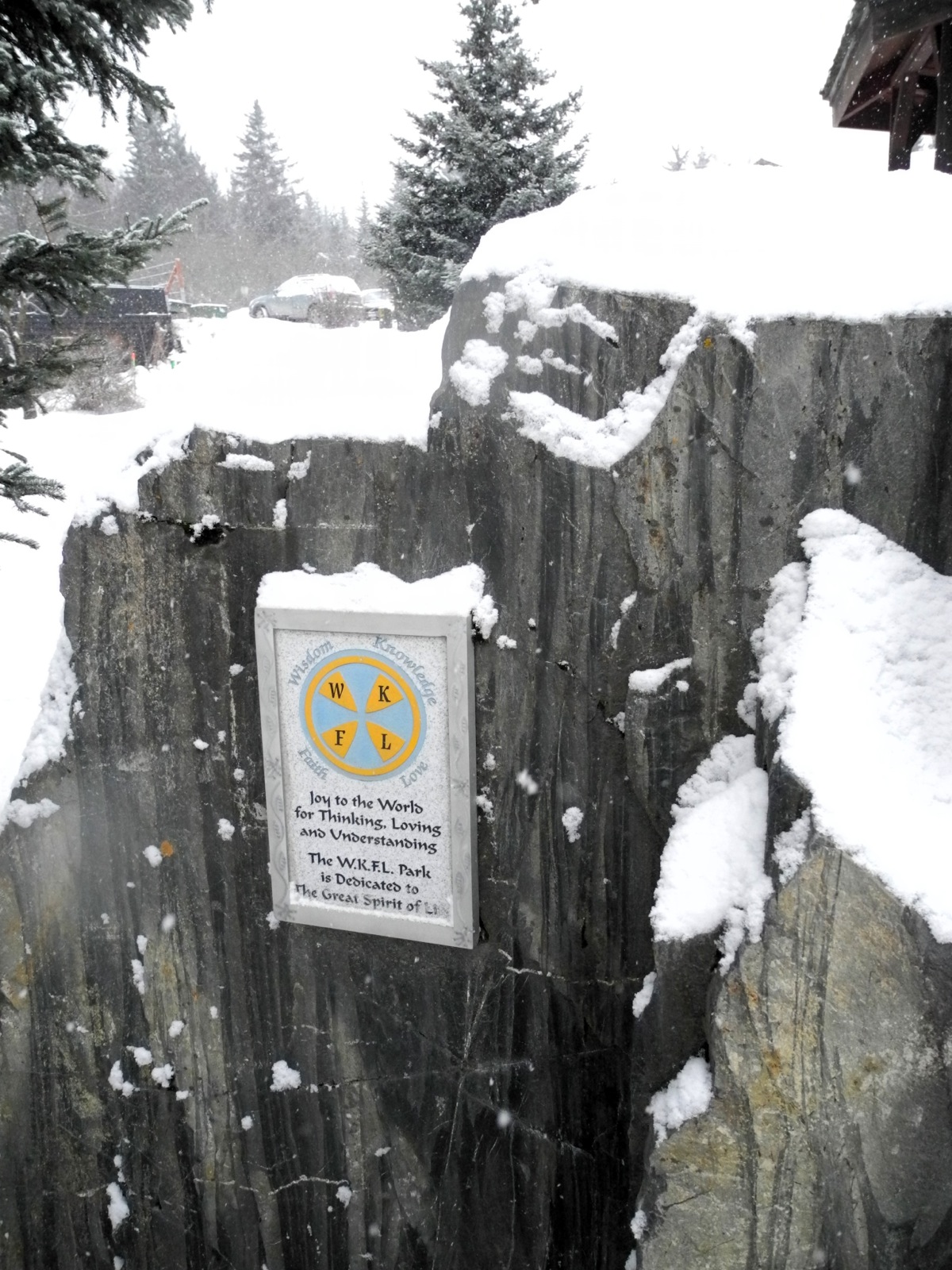At a meeting and public hearing Thursday night, the Homer Public Arts Committee didn’t just reject the idea of putting a bust of the late Brother Asaiah Bates in WKFL Park. It recommended not accepting into the city art collection at all a proposed donation of the $18,500 bronze bust.
John Nazarian, a friend of Brother Asaiah, planned to commission a sculpture by Homer artist Leo Vait to be cast as a bronze statue and placed on the rock in WKFL Park. Brother Asaiah died in March 2000 at the age of 78.
The recommendation goes to the Homer City Council for its consideration. It will be on the March 24 meeting agenda. The council had considered previous recommendations from the Public Arts Committee and the Parks and Recreation Commission to accept the statue. Both bodies balked on the issue of where to put it. The council sent the matter back to the Public Arts Committee.
Brother Asaiah made a partial donation to the city of the lot at the corner of Pioneer Avenue and Heath Street. The name of the park means “Wisdom, Knowledge, Faith and Love,” and refers to the Wisdom, Knowledge, Faith and Love Fountain of the World. Started in Simi Valley, Calif., in the late 1940s by Krishna Venta, WKFL came to Homer in 1957 to establish a branch on 480 acres of land in the Fox River Valley at the head of Kachemak Bay. The group was known as the Barefooters for their practice of going barefoot, even in winter.
At a public hearing Thursday night, six people spoke, all against the idea of putting a statue in WKFL Park. Some raised separation of church and state issues, with concerns about WKFL being a religious organization.
In an interview for a Jan. 30 Homer News article on the park, former Barefooter Helen Jackson described WKFL as a humanitarian service group and not a religious organization.
Linda Jones expressed concerns about WKFL’s spiritual aspect.
“Regardless of anything, WKFL was a religious organization,” she said.
Others said at the meeting that they felt a statue would go against Brother Asaiah’s wishes. A few referenced an opinion piece by artist Brad Hughes about the relevancy of personal statues.
“I’m very opposed to that being put actually anywhere in the city,” said Troy Jones, a lifelong resident and East End Road homesteader. “I don’t think it was his wishes.”
Ray Kranich, another Homer resident whose parents were early Homer pioneers, said he agreed with Hughes. He said he thought the issue of personal memorials was settled by the city when the council decided not to put a memorial to Jean Keene on city land on the Spit. Hughes eventually designed and made a memorial bench that’s at Land’s End Resort.
“You’re going to open a big bag of worms when you start putting personal memorials on city property,” Kranich said. “You start putting personal memorials on city property you wouldn’t have room in that park for a bench.”
Arlene Ronda, another longtime Homer resident, agreed with Hughes’ opinion, too.
“Obviously, all of this is a Rorschach Test. We see into it what we see into it,” Ronda said.
Brother Asaiah had a strong belief in the divine and the transitory nature of human existence, she said.
“I do think that we honor Asaiah for that reason, for his humanity and for his existence, that he sees the good in other people, that we respect one another. That’s why I’m here,” Ronda said.
Michael Kennedy, a friend of Brother Asaiah who with Hughes helped bury him, said, “That was true, the sentiment — don’t look back,” referring to Brother Asaiah’s burial wishes that once he was placed in the ground people turn away.
Kennedy also said he thought there might be some constitutional issues.
“Maybe the city erred in accepting this property, to take the property and name it ‘WKFL’ and that it has a religious connotation,” he said.
Billy Choate had written an opinion piece describing his abuse by a follower of Venta when Choate was a teenager.
“I had dozens and dozens of calls and emails from people who feel the same way I do, that it’s not a place for a bust,” Choate said at the hearing.
Ken Landfield, also a friend of Asaiah, said if it was his money, he would spend it on a lecture series, but he didn’t think there should be a statue.
“If there were a person deserving of a statue in Homer, I think Asaiah should be on the short list. Also, if a statue is to be built, Leo is the one to do it,” Landfield said. “I don’t think he wanted his name associated with the park. I don’t see how you can put a statue in the park he didn’t want his name on.”
Landfield has been following the issue since it first came up at the Public Arts Committee.
“The reasons I stirred up this pot, I think we should have this conversation,” he said. “If the statue were to go up without this conversation, that would be painful on a lot of levels.”
Michael Armstrong can be reached at michael.armstrong@homernews.com.


